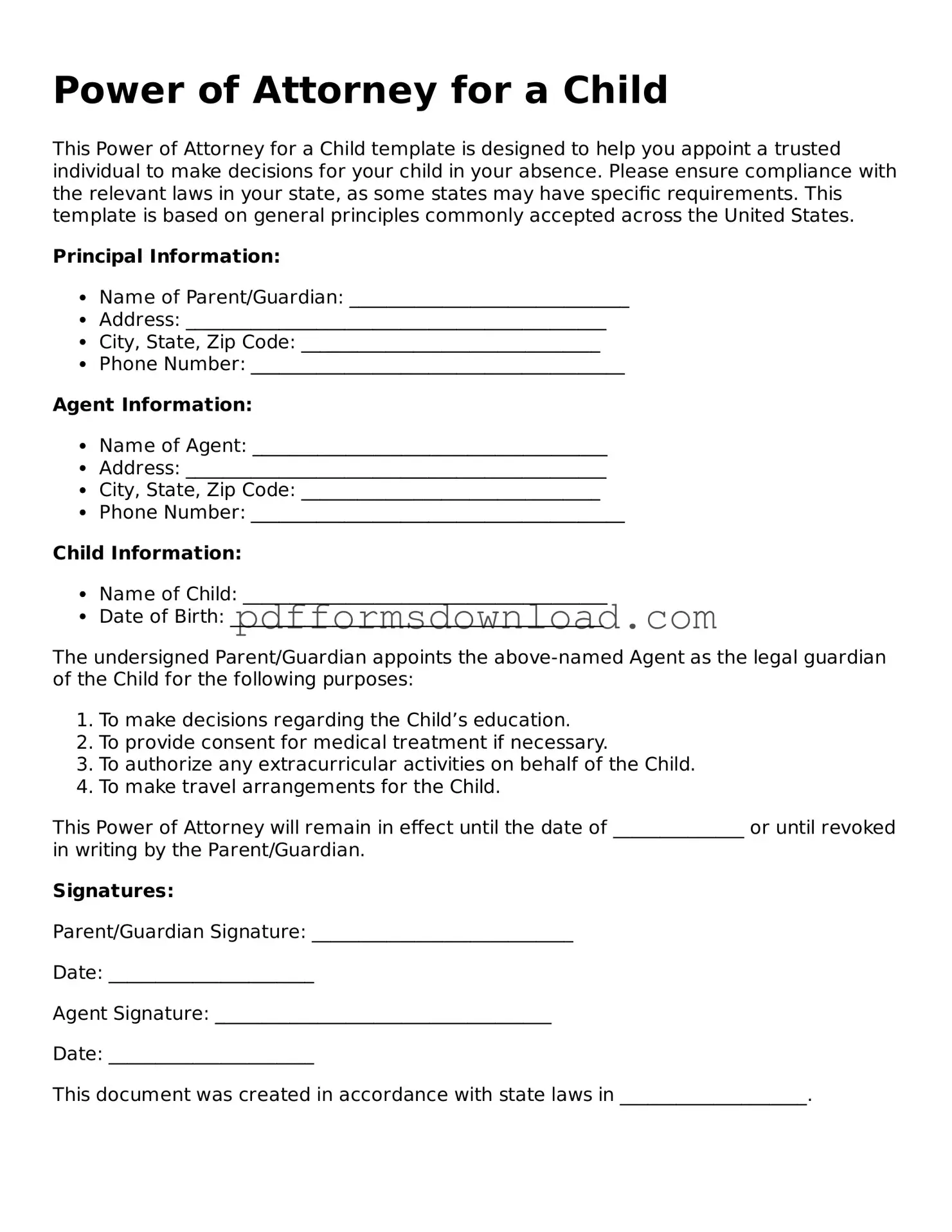What is a Power of Attorney for a Child?
A Power of Attorney for a Child is a legal document that allows a parent or legal guardian to designate another individual to make decisions on behalf of their child. This can include medical, educational, and financial decisions. It is often used when a parent is unable to care for their child temporarily due to travel, illness, or other circumstances.
Who can be appointed as an agent in the Power of Attorney for a Child?
The agent can be anyone the parent trusts to act in the best interest of the child. This may include relatives, close friends, or trusted neighbors. It is important to choose someone who understands the responsibilities involved and who will prioritize the child's well-being.
How long does a Power of Attorney for a Child remain in effect?
The duration of the Power of Attorney for a Child can vary based on the terms set within the document. Typically, it remains in effect until the specified end date, unless revoked earlier by the parent or guardian. In some cases, it may also automatically terminate when the child reaches a certain age or when the parent returns to care for the child.
Do I need to have the Power of Attorney for a Child form notarized?
While notarization is not always required, it is strongly recommended. Having the document notarized can help ensure its validity and may be necessary for certain institutions, such as schools or medical facilities, to recognize the authority of the appointed agent.
Can I revoke a Power of Attorney for a Child once it is established?
Yes, a Power of Attorney for a Child can be revoked at any time by the parent or legal guardian. To do so, it is advisable to provide written notice to the agent and any relevant parties, such as schools or healthcare providers, to prevent any confusion regarding the authority of the agent.
What should I consider before creating a Power of Attorney for a Child?
Before creating a Power of Attorney for a Child, consider the trustworthiness and reliability of the individual you wish to appoint. It is crucial to communicate openly with them about your expectations and the responsibilities involved. Additionally, think about the specific powers you want to grant and whether any limitations should be included to protect your child's interests.
